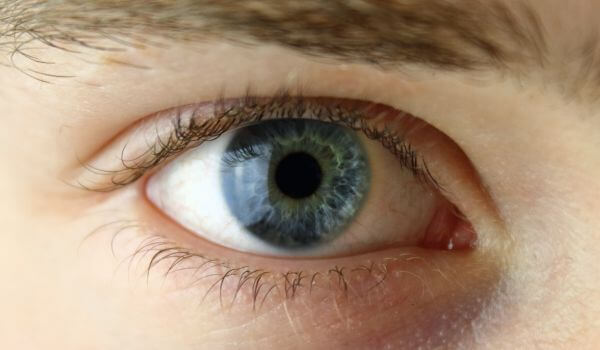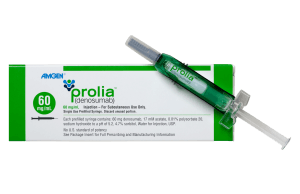
Why is thyroid awareness important? Even with its prevalence, diagnosing, treating, and managing Hashimoto’s Thyroiditis can be tough. I grew to understand this when I developed the condition myself. I’m sharing my story in the hope that it will bring awareness to others who may be silently suffering.
My Symptom Journey
My initial symptoms of an underactive thyroid began a good year before they became really noticeable. I was 25 years old and in relatively good health, working as a nutritionist and practicing what I preached when it came to diet and lifestyle. I barely touched pharmaceutical medication and believed the only path to health was 100% natural.
Despite my young age, I started coming home from work absolutely exhausted and always freezing cold. I would turn the heater on in the living room, wrap myself in blankets on the couch, watch TV, and sleep. I’d never liked the cold, so I just put my behavior down to general fatigue and intolerance of the weather. One of the issues with an underactive thyroid is that the symptoms can be very vague and are often attributed to other things, such as stress or simply just feeling a bit under the weather.
Over time, things got worse. I had started back at university to do my teaching degree. I would drive to the university campus, and if I couldn’t find a car parking space close to the university entrance, then I would just drive straight home and catch up on the recorded lectures later on. I was too physically exhausted to walk more than 10 minutes from the car park to the lecture hall.
Physically, my hair had started to thin, and the outer edge of my eyebrows fell out. My face was puffy, and I was gaining weight despite having no appetite for food and barely eating. I also had strange heart flutters, palpitations, and a fluctuating heart rate. Yet, being at university again while also working, I put this all down to stress and exhaustion.
The final straw before visiting a doctor was when I had a consistent strange feeling in my throat, almost like my tongue was too big for my mouth. I struggled to maneuver it around to form words, and my speaking voice was slurred and husky. One day, my voice disappeared entirely, and I could only speak in whispers. By this time, I was teaching 9th graders, and let me tell you, trying to control a class of 30 students with no speaking voice took its toll. I would drive home (the brain fog making that quite a dangerous thing to do in hindsight) and fall asleep, wake up around 12 hours later, still exhausted, and do it all again.
Getting a Diagnosis of Hashimoto’s Thyroiditis

Feeling a bit desperate and knowing something was wrong, I finally asked my doctor to refer me for a blood test, including a thyroid screening panel. She didn’t want to do it, stating I was too young and it was unlikely that my thyroid was playing up, but when reminded of my family history, she agreed.
A week later, I was called back to the doctor. The test results showed that my thyroid hormones T3 and T4 were well below what they should be. My thyroid antibodies, which indicate that my immune system was attacking my thyroid gland, were off the charts – in the thousands when healthy levels should be below 30. The numbers were so bad that my doctor did not know what to do and immediately referred me to an endocrinologist specializing in Hashimoto’s Thyroiditis.
When I saw him for the first time, he took one look at me and exclaimed, “You’re the absolute clinical picture of Hashimoto’s. I wish I had my students here to look at you!” He was also furious that it had taken months before a doctor had checked my thyroid and that it had been done only at my own insistence.
Why is Hashimoto’s so hard to diagnose?
While the method of diagnosis itself is not complicated, it’s common for people to visit several doctors before they get a diagnosis. This is likely because the symptoms can be so nonspecific that they could be any number of other, more common, conditions. It took a specialist to really look at me and know immediately what was wrong. I also never even saw a doctor until my symptoms were quite debilitating, as for a long time, they were low-grade, and I just kept thinking I was burnt out.
As a doctor might need a few tries to find the right dose and medication before you start feeling better, it is important to pick a specialist you trust and feel comfortable talking to about your symptoms and treatment choices. Some people succeed by seeing just an endocrinologist, while others improve by consulting a nutritionist or dietitian to change their diet and lifestyle alongside medication.
I try to always remember that I know my body better than anyone else. If something feels off, I keep looking into it. Find a practitioner who takes the time to listen and understand.
My Recovery Journey
It took over a year from the onset of my symptoms to get a diagnosis and treatment plan. I felt relieved in a way to finally have the diagnosis, but I was concerned about being placed on lifelong medication to treat it, especially as I was pretty anti-pharmaceutical at the time. However, I was desperate to get better and needed all the help I could get. I was put on Armour Thyroid, and I took it religiously each morning. After six weeks, there were more blood tests, and things were looking much better clinically, but I still felt awful. After eight weeks, I really started to notice a difference. The brain fog lifted, I could eat again, and I had lots more energy. I also dropped the 30 pounds or so that I had gained, and my face “depuffed.” Some symptoms, like being sensitive to cold and having some joint pain, did not leave, though, and I still have them to this day, though not as severely as I did before I was medicated.
Many people with Hashimoto’s still have symptoms even when taking medication. While some feel better and return to their normal selves, others continue to struggle with symptoms that impact their quality of life, even when their thyroid levels are normal. I was one of the lucky ones who responded very well to the medication, and I have been managing my condition with blood tests every six months and slight adjustments to the dosing regime over the last 15 years.
Diet and Lifestyle Changes

I tried multiple diets focused on reducing inflammation for my condition, but the one I found helps the most is a gluten-free diet. Research suggests that following a gluten-free diet can help improve thyroid function and lower thyroid antibodies in people with Hashimoto’s. I do not always follow a gluten-free regime, but I find that when I do, I feel significantly less “thyroid-y” (the name my mother and I give to our hypothyroid symptoms). I recommend that my patients with Hashimoto’s try this diet at least for a few months to see if it helps with their symptoms and health indicators.
From my experience treating people with Hashimoto’s, I learned that anti-inflammatory supplements like fish oil, along with nutrients such as zinc, selenium, and magnesium, might be beneficial. People with Hashimoto’s often lack certain nutrients like vitamins B12 and D. In my case, B12 has always been okay, but my vitamin D tends to be low, so I take a daily supplement for this and have the levels checked yearly. I also take magnesium glycinate for my muscle fatigue, brain fog, and sleep quality.
Letting my body recover was also very important. When I was diagnosed, I didn’t have the energy to exercise, so I allowed myself to rest and did so until I felt better. Most of the time, I’m back to my usual energy and don’t have many symptoms. But sometimes, I have days when I need to take it easy, and that’s alright. These days, I find restorative exercises, such as yoga and long walks, to be best for my body.
Drinking alcohol, not sleeping enough, and getting too stressed or overwhelmed all make me feel significantly worse. Many of my patients with Hashimoto’s feel the same way, so these are the main things I try to avoid.
An Integrative Approach to Treatment of Hashimoto’s Thyroiditis
Using medication, taking specific supplements, and following a healthy diet gradually improved how I felt. It also began my journey into integrative nutrition, realizing that in a lot of cases, pharmaceutical medications should be used alongside diet and lifestyle changes for the most effective treatment plan. Nowadays, I have a much more balanced view of what healing the body means.
Keep in mind, though, that dealing with an autoimmune disease is a long-term journey, not something that gets better quickly. Patience and adherence to the treatment plan is key!
Finally, remember that you have support, especially during Thyroid Awareness Month! Reach out to friends, family, and healthcare providers when it all feels just a bit too much to handle. If I’m any proof, you can still have a wonderfully full and exciting life with a well-managed thyroid condition.
Can you live a long life with Hashimoto’s Thyroiditis?
With proper treatment, people with Hashimoto’s disease can live a normal lifespan. Sometimes, it occurs alongside other autoimmune disorders, which can cause additional problems. If Hashimoto’s disease is not treated, it might harm the heart and raise the risk of heart disease.
Can Hashimoto’s Thyroiditis be cancerous?
Some studies have shown that people with Hashimoto’s thyroiditis have a higher chance of getting breast cancer, urogenital cancer, digestive system cancer, and blood-related cancers but a lower chance of developing respiratory cancers.
What are the warning signs of Hashimoto’s Disease?
Hashimoto’s disease can cause several symptoms, including constipation, dry skin, and hair loss. Individuals might feel tired, have trouble concentrating, or experience heavy or irregular periods. An enlarged neck or goiter might also appear early on. People with this condition may also feel extra sensitive to cold temperatures.
















